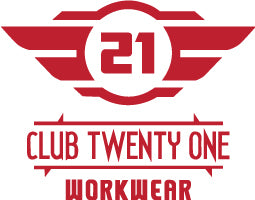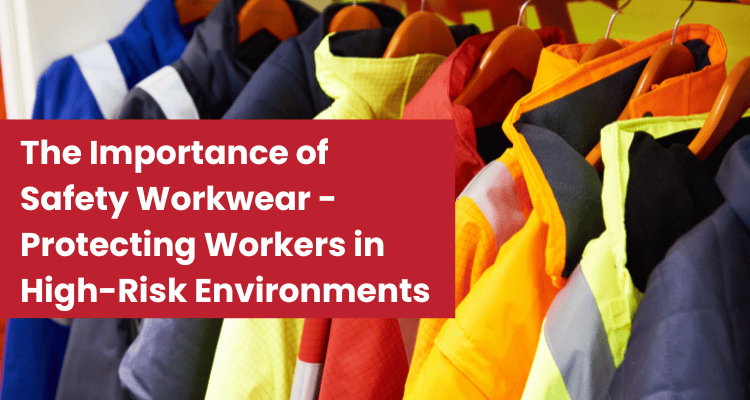Safety workwear is essential across various industries, particularly in high-risk environments where hazards are prevalent. Protective clothing, specifically, plays a crucial role in shielding workers from potential harm, ranging from chemical spills to extreme temperatures. This article delves into the importance of safety workwear, with a focus on protective clothing, its role in ensuring workplace safety, and the benefits it brings to both employees and employers.
The Role of Safety Workwear in High-Risk Environments
- Reducing Workplace Hazards: Safety workwear, especially protective clothing, is designed to create a barrier between workers and the hazardous elements in their work environment. This is crucial in industries like construction, manufacturing, and mining, where risks such as extreme heat, chemical exposure, and abrasions are frequent.
- Compliance with Health and Safety Standards: Many industries require that employers provide appropriate safety gear, including protective clothing, to meet regulatory standards. This ensures not only compliance but also a safer workplace, reducing potential liabilities.
- Boosting Worker Confidence and Productivity: When workers feel secure in their protective clothing, they’re more focused and efficient. This confidence, built on knowing they’re adequately protected, fosters a safer, more productive work environment.
Key Type of Safety Workwear: Protective Clothing
Protective clothing is specialized attire designed to shield workers from specific workplace hazards. Here are some of the common types and their unique protective features:
1. Flame-Resistant Clothing:
- Purpose: Made from materials that resist ignition, flame-resistant clothing is vital in industries like welding, oil and gas, and firefighting, where workers are exposed to high temperatures or open flames.
- Features: Advanced fabrics such as Nomex and Kevlar offer not only fire resistance but also durability and comfort, allowing workers to move freely while staying protected.
2. High-Visibility Clothing:
- Purpose: High-visibility jackets and vests, often required for roadside or construction work, make workers easily noticeable in environments with heavy equipment or low lighting.
- Benefits: This type of clothing, often in fluorescent colors with reflective strips, is crucial for preventing accidents, especially in busy or poorly lit areas.
3. Chemical-Resistant Clothing:
- Purpose: Chemical-resistant clothing, typically worn in laboratories or manufacturing plants, protects against potential chemical spills, splashes, or fumes that could otherwise cause severe skin damage.
- Material Composition: These garments are made from specialized materials like PVC or rubber, which act as a barrier against hazardous substances, ensuring worker safety during exposure.
4. Cut-Resistant and Abrasion-Resistant Clothing:
- Purpose: In industries involving sharp tools, machinery, or rough surfaces, cut-resistant clothing made from materials such as Kevlar is essential. It reduces the risk of cuts and abrasions, providing a durable layer of protection.
- Applications: This type of protective clothing is especially important in industries like construction, glass handling, and metal fabrication, where handling sharp objects is routine.
5. Cold-Weather Protective Clothing:
- Purpose: Designed for workers in extreme cold environments, this clothing is insulated and often waterproof to prevent hypothermia and frostbite.
- Key Features: Layered, insulated fabrics with moisture-wicking properties help maintain body temperature, keeping workers warm and dry even in harsh outdoor conditions.
Benefits of Using Protective Clothing in High-Risk Environments
- Reducing Injury and Fatality Rates: Protective clothing minimizes the risk of injuries and fatalities by shielding workers from direct contact with hazards. This includes everything from flame-resistant suits for welders to high-visibility clothing for construction workers.
- Lowering Employer Costs: Fewer injuries mean fewer medical expenses and less downtime. By investing in high-quality protective clothing, employers can reduce costs associated with workplace accidents, insurance, and employee turnover.
- Improving Worker Morale and Retention: Providing reliable protective clothing demonstrates a company’s commitment to its employees’ safety and well-being. When workers feel protected and valued, it leads to higher morale, job satisfaction, and ultimately better retention rates.
Choosing the Right Protective Clothing for the Job
- Consider Specific Hazards: Protective clothing should be chosen based on the specific hazards of each role, whether it's flame-resistant gear for fire-related jobs or chemical-resistant suits for lab work.
- Compliance with Industry Standards: It’s essential to select protective clothing that complies with relevant safety regulations and standards, ensuring both legal compliance and worker protection.
- Quality and Durability: Investing in durable, high-quality materials ensures that protective clothing can withstand the daily demands of high-risk environments, offering consistent protection over time.
Conclusion
Protective clothing is a vital aspect of safety workwear in high-risk environments, providing essential protection from hazards that workers face every day. From flame-resistant suits to high-visibility jackets, the right protective gear not only safeguards lives but also fosters a culture of safety and responsibility in the workplace. By prioritizing high-quality, appropriate safety clothing, companies can ensure a safer, more productive environment where employees feel valued and secure.

